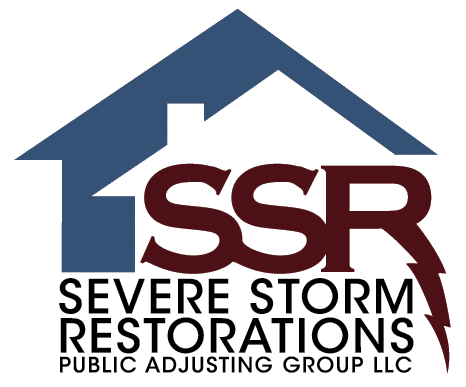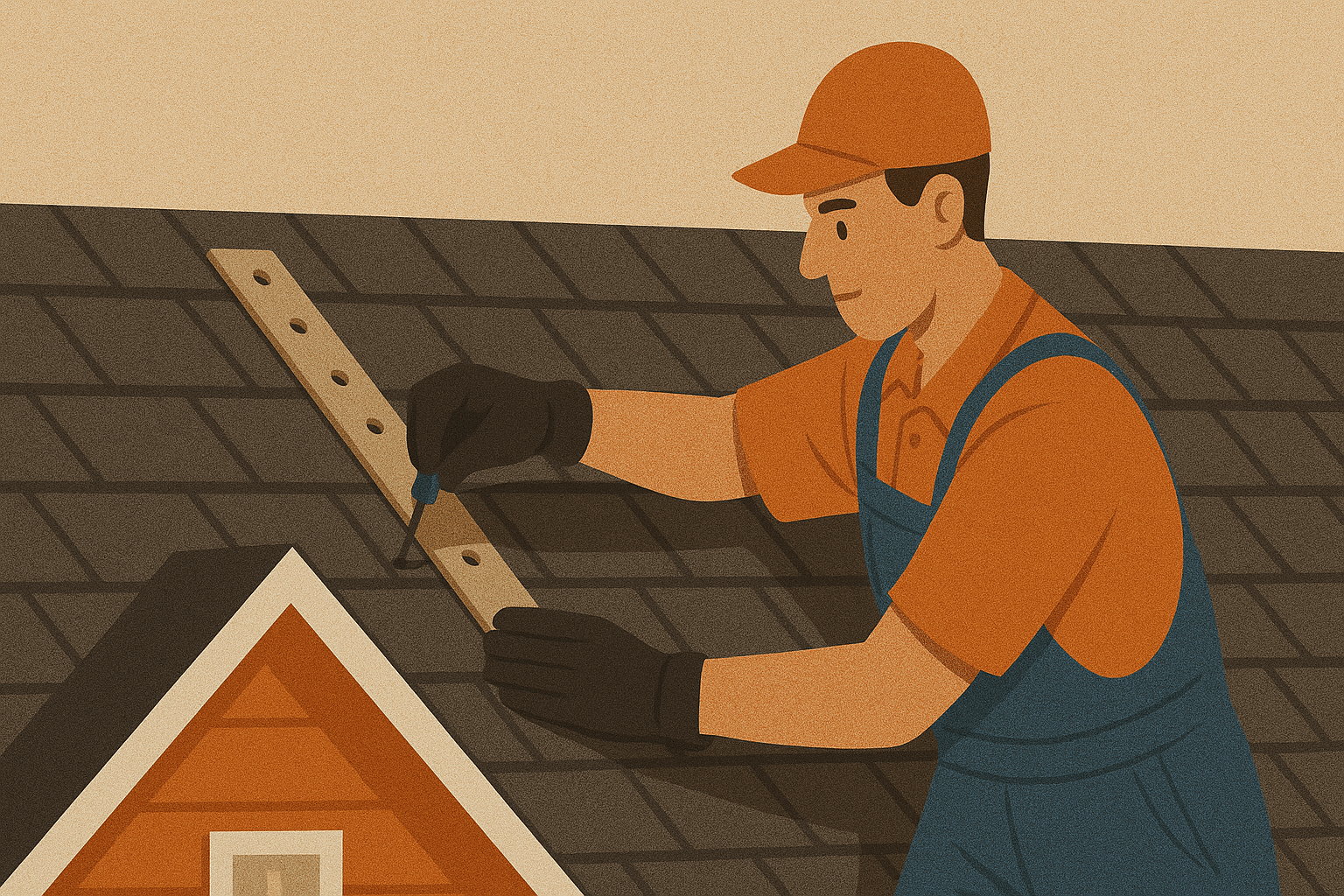Table of Contents
Introduction
Storms are unpredictable, powerful, and capable of causing severe damage to homes and commercial properties. While some storms may pass without causing obvious harm, even minor damage can have far-reaching consequences if not addressed immediately. It’s easy to feel relieved if the visible damage appears minimal after a storm, but this can lead to a false sense of security. In reality, small issues, such as a missing shingle or a crack in the siding, can escalate into major problems if ignored.
Storm damage comes in many forms—whether caused by wind, hail, water, or lightning—and can have long-lasting effects that compromise the structural integrity, safety, and value of your property. For instance, water infiltration can lead to mold growth, while damaged roofs may result in leaks that weaken the interior structure over time. Each of these issues, when left unchecked, can spiral into more costly repairs and pose serious health risks.
In this article, we’ll explore the most common types of storm damage and their immediate effects. We’ll also delve into the long-term risks of ignoring storm damage, explaining how unaddressed issues can undermine the safety of your home or business. Finally, we’ll highlight the importance of regular inspections and timely repairs, which are key to preserving the value and structural integrity of your property. By understanding these risks and taking proactive steps, you can better protect your property and avoid the costly consequences of ignoring storm damage.
Common Types of Storm Damage
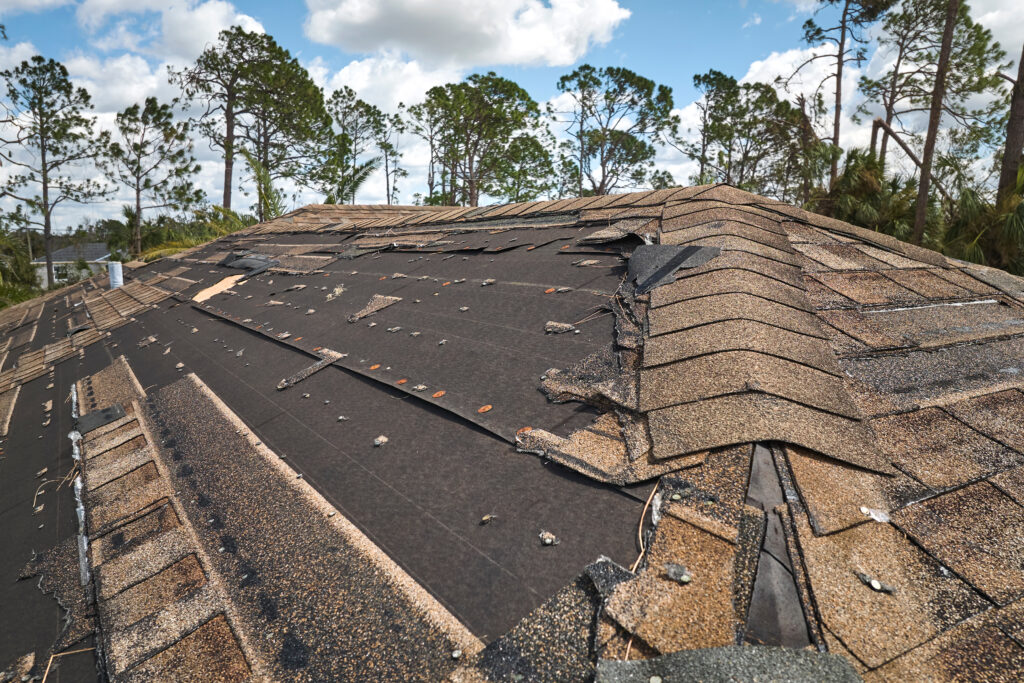
Storms can cause a variety of damages to different parts of a property, ranging from obvious structural issues to hidden, hard-to-detect problems. Understanding the types of damage that storms typically cause is essential for property owners to identify potential risks and take prompt action to prevent further deterioration. Each type of storm brings its own unique challenges, and knowing what to look for after severe weather is the first step in safeguarding your property.
Wind Damage: High winds are one of the most common causes of storm damage. Winds can rip shingles off roofs, break windows, knock down fences, and cause trees or branches to fall on homes or buildings. In many cases, the damage may not be immediately visible, but loosened roof shingles or flashing can allow water to seep in over time, leading to more significant problems like leaks or mold growth.
Hail Damage: Hailstorms can cause serious harm to roofs, siding, gutters, and windows. The impact of hailstones can leave behind dents, cracks, and holes, which may compromise the exterior of your home or business. While some hail damage, like cracked windows, may be easy to spot, smaller dents on roofs or siding can go unnoticed, potentially allowing moisture to penetrate the structure.
Water Damage: Heavy rain and flooding during a storm can lead to water infiltration through roofs, windows, doors, and even the foundation of a building. Water damage can result in mold growth, warped wood, and weakened structural components. Often, water damage starts small but can escalate quickly if not addressed. Signs of water damage include damp spots on walls, ceilings, or floors, as well as musty odors.
Lightning and Fire Damage: While less common, lightning strikes during a storm can lead to fire damage. When lightning hits a property, it can cause electrical fires, damage to the roof, and even compromise the integrity of the structure. Fire damage, regardless of the cause, requires immediate attention to ensure the safety of the occupants and the stability of the building.
Each type of storm damage comes with its own set of risks, and understanding these potential dangers is crucial for addressing them before they worsen. By being aware of the different forms of damage storms can cause, property owners can take the necessary steps to inspect their homes or businesses and make timely repairs, preventing long-term consequences.
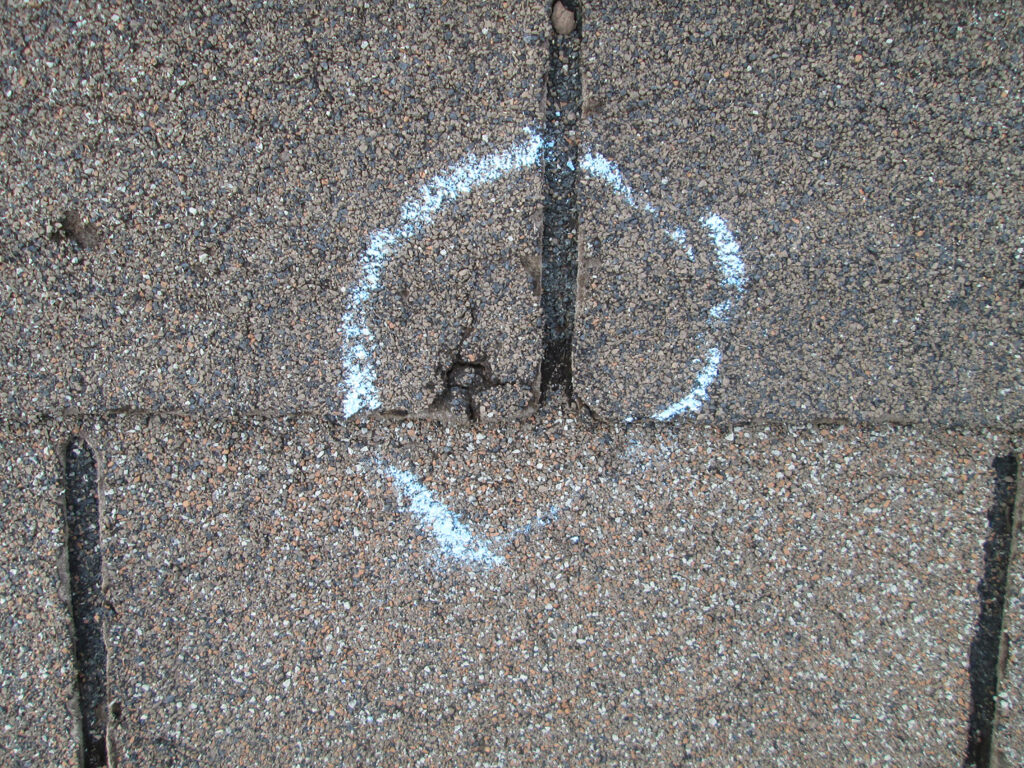
Immediate Risks of Ignoring Storm Damage
After a storm, property owners may be tempted to overlook what appears to be minor damage, especially when the issues don’t seem immediately urgent. However, even the smallest signs of damage can have significant and immediate negative impacts on your property. Ignoring these issues can lead to costly repairs down the road and may compromise the safety and integrity of your home or business. Understanding the immediate risks of ignoring storm damage is key to preventing more serious problems from developing.
Structural Integrity Issues: Wind, water, and impact damage from storms can significantly weaken the structural integrity of your property, even if the damage seems minor. A small roof leak, for example, may seem like a minor inconvenience, but over time, that leak can cause water to seep into the support beams, causing them to rot or weaken. Similarly, a crack in the siding might appear insignificant, but it can allow water and pests to infiltrate, leading to moisture buildup and damage to the internal structure. The longer these issues are left unaddressed, the more the underlying structure of the property deteriorates, resulting in more extensive and costly repairs.
Water Infiltration and Leaks: One of the most common and dangerous consequences of storm damage is water infiltration. Water can find its way into your property through the tiniest cracks in your roof, siding, windows, or foundation. Once inside, water can wreak havoc on insulation, drywall, ceilings, and flooring. Unchecked water damage not only weakens these materials but can also lead to mold growth, which poses serious health risks. Water infiltration can also damage electrical systems, increasing the risk of short circuits or fires. What may begin as a small leak can quickly escalate into widespread water damage, requiring extensive remediation efforts.
Ignoring these seemingly minor issues can result in extensive damage to your property’s structure, increasing the overall cost of repairs and, more importantly, compromising the safety of its occupants. Addressing storm damage immediately, no matter how small it may seem, is critical to maintaining the long-term health and value of your home or business.
Long-Term Consequences of Ignoring Storm Damage
While the immediate risks are concerning, the long-term consequences of ignoring storm damage can be even more costly and dangerous. Property owners should take the following potential outcomes seriously:
Mold Growth and Health Risks
When water damage is left untreated, it creates the perfect environment for mold and mildew to grow. Mold thrives in damp, dark environments, often forming in walls, ceilings, and floors that have been affected by water infiltration. Mold growth not only compromises the structural integrity of your property but also poses serious health risks to the occupants.
Exposure to mold can lead to respiratory problems, allergic reactions, and asthma attacks, especially in vulnerable individuals such as children and the elderly. Over time, extensive mold growth can require costly remediation, including tearing out and replacing affected materials.
Increased Repair Costs Over Time
A small roof leak or minor siding damage may seem insignificant at first, but ignoring these issues will likely lead to much larger, more expensive repairs down the road. For example, a simple roof repair might cost a few hundred dollars, but if left unattended, it could lead to major water damage that requires extensive reconstruction and roof replacement.
The longer storm damage is ignored, the more it deteriorates. This drives up repair costs significantly, turning what could have been a manageable expense into a much larger financial burden.
Roof Deterioration and Failure
The roof is one of the most vulnerable parts of your property during a storm. Ignoring damage to your roof—such as missing or cracked shingles, lifted flashing, or dents from hail—can result in long-term deterioration. Over time, this will cause leaks, weakening of the underlying roof structure, and eventual roof failure.
A compromised roof not only puts your entire property at risk but can also lead to increased heating and cooling costs due to poor insulation and ventilation. If roof damage is neglected for too long, it may necessitate a complete roof replacement, which is far more expensive than preventive maintenance.
Decreased Property Value
Neglecting storm damage has a direct impact on your property’s value. Prospective buyers will be wary of purchasing a property with unresolved structural or water damage, and your home inspection report could reveal issues that deter potential buyers. In commercial real estate, visible signs of damage can drive away business tenants and affect rental income.
Taking the necessary steps to repair storm damage as soon as possible helps preserve the value of your property and ensures it remains an attractive asset in the market.
The Importance of Regular Inspections and Maintenance
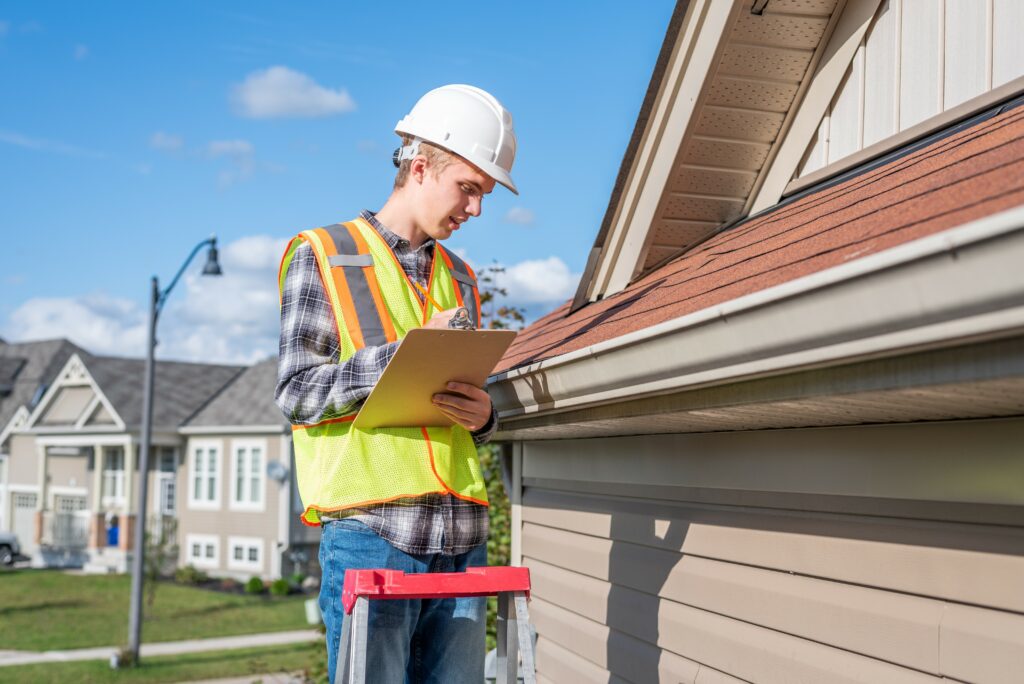
Regular inspections are essential for preventing long-term damage from storms, as they allow property owners to catch issues early before they become costly and severe. After a storm, it’s easy to overlook potential damage, especially if there are no visible signs. However, problems like small cracks in the roof, damaged flashing, or gaps around windows and doors may not be immediately noticeable to the untrained eye. Conducting thorough inspections of your roof, exterior walls, windows, and foundation after each storm is crucial to identifying potential vulnerabilities.
Many of these issues, such as tiny cracks or leaks, can be hidden beneath the surface and only detectable through a professional inspection. Roofs, for instance, may look fine from ground level, but a closer examination could reveal missing shingles, lifted flashing, or small punctures caused by hail or debris. Similarly, the foundation of your home or business might have developed minor cracks due to shifting soil after heavy rainfall. A professional inspection ensures that even these subtle problems are identified and addressed before they worsen.
In addition to inspections, professional maintenance services play a crucial role in extending the lifespan of your property’s materials. Regular upkeep, such as sealing cracks in siding, applying water-resistant coatings, and repairing damaged roofing, not only protects your property from the elements but also strengthens its resilience against future storms. For example, applying a water-resistant coating to your roof and exterior walls can help prevent water infiltration during heavy rainfall. Similarly, fixing small roofing issues early can prevent leaks that might otherwise lead to water damage inside your home.
By investing in regular inspections and professional maintenance, property owners can fortify their homes and businesses against future storms, ensuring that minor damage doesn’t escalate into major repairs. These proactive steps save money in the long run, reduce the risk of structural damage, and keep your property safe and secure year-round.
Steps to Take After a Storm to Prevent Long-Term Damage
Addressing storm damage as soon as it occurs is critical to protecting your property from further issues. Taking prompt action ensures that minor problems don’t escalate into major repairs that can be costly and time-consuming. Here are the steps you should take after a storm to prevent long-term damage:
Inspect the Roof and Exterior: Once the storm has passed, your first step should be to carefully inspect the roof and exterior of your property. Look for obvious signs of damage, such as missing or loose shingles, dents in siding or gutters, and cracks around windows or doors. These visible signs are often just the beginning of potential problems. If your roof is difficult to access or you feel unsafe climbing up, use binoculars to check from the ground or hire a professional roofer to assess the damage safely. Roof damage left untreated can lead to leaks, which will only worsen with time.
Check for Water Damage: After inspecting the exterior, it’s equally important to check the interior for signs of water damage. Water stains on ceilings, warped or buckled flooring, and damp walls are clear indicators that water has infiltrated your property. These signs shouldn’t be ignored, as water damage can lead to mold growth and weaken the structural integrity of your home or business. Once you identify water damage, act quickly to locate the source of the leak and fix it before the problem spreads. Timely repairs will not only prevent further damage but also avoid the health hazards associated with mold.
Hire Professional Inspectors: Even if you don’t spot any visible damage during your initial inspection, it’s essential to bring in professional storm damage inspectors. Experts are trained to detect hidden issues, such as weakened support structures, underlying roof damage, and mold growth that may not be immediately apparent. A professional inspection ensures that no area is overlooked, giving you peace of mind that your property is safe and sound. Professional inspectors can also provide documentation for insurance claims, which is important for receiving compensation for storm-related repairs.
Address Minor Repairs Immediately: If any minor damage is found during the inspection, don’t delay repairs. Small issues, like a few missing shingles or minor cracks in the siding, can quickly escalate into larger, more expensive problems if left unattended. For example, a small roof leak could lead to widespread water damage in your ceilings and walls over time. Handling repairs early not only saves you money in the long run but also helps protect your property from further deterioration. By taking immediate action, you can restore your home or business to its original condition and ensure that it’s better prepared for future storms.
Conclusion
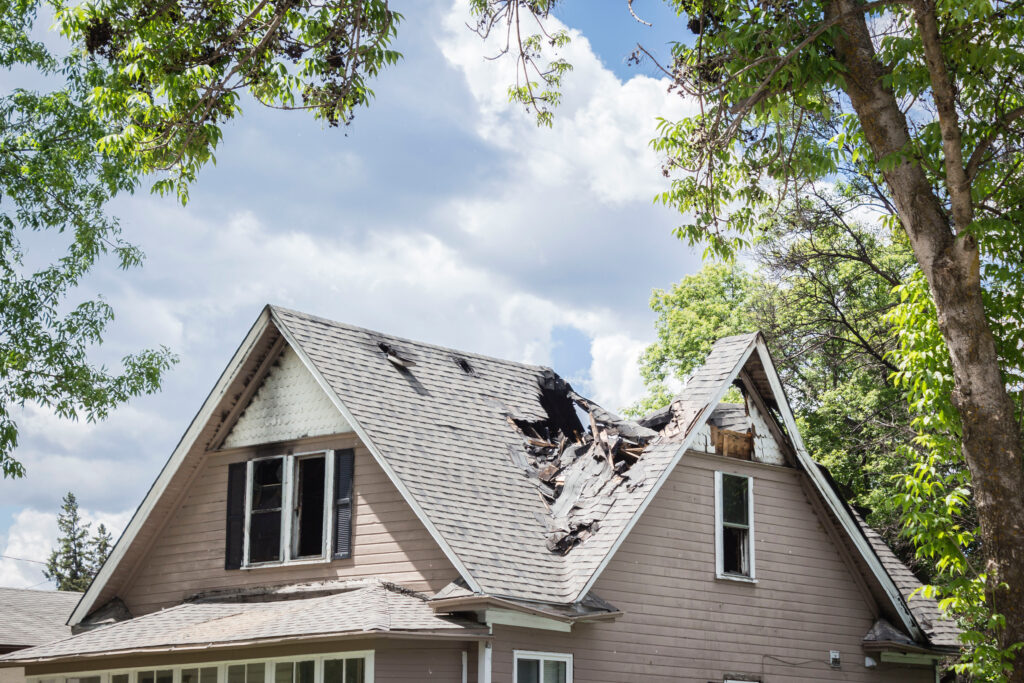
The long-term effects of ignoring storm damage can have severe and far-reaching consequences on both the structural integrity and the value of your property. What may initially seem like a minor issue, such as a small leak or a few missing shingles, can quickly escalate into major problems if left unaddressed. Over time, these seemingly insignificant issues can lead to significant structural damage, costly repairs, and even potential health risks for the occupants. From mold growth to roof deterioration, the longer storm damage is ignored, the more it compounds, making the repair process more expensive and time-consuming.
One of the most concerning risks of leaving storm damage untreated is mold growth. Water infiltration, whether through a damaged roof, cracked windows, or foundation issues, creates the perfect environment for mold to thrive. Mold doesn’t just damage the materials it grows on—it can also pose serious health risks, particularly to those with respiratory conditions or allergies. Mold remediation is often much more expensive than repairing the initial cause of water damage, making early intervention critical.
Another long-term consequence is roof deterioration. The roof is one of the most important components of your property, protecting the interior from the elements. When storm damage, such as missing or cracked shingles, is ignored, it allows water to seep into the underlying structure, leading to rot and decay. Over time, this compromises the roof’s integrity, increasing the risk of leaks, structural failure, and the need for a full roof replacement, which is a far more expensive and disruptive process than simple repairs.
Moreover, the financial impact of ignoring storm damage can be staggering. Small issues that could be fixed quickly and affordably can escalate into larger problems, requiring extensive repairs or replacements. For example, a small leak that goes unnoticed can lead to widespread water damage, mold growth, and electrical issues, all of which come with hefty repair bills. In addition, untreated storm damage can result in a significant decrease in your property’s value. If you plan to sell your property, prospective buyers may be deterred by visible damage or by inspection reports that reveal underlying issues, forcing you to either lower the asking price or invest in costly repairs before selling.
At Severe Storm Restorations, LLC, we specialize in storm damage inspections and repairs, offering professional services that help property owners address problems early, prevent further damage, and protect their investment. Our team understands the importance of addressing storm damage promptly and thoroughly, ensuring that even the smallest issues are identified and resolved before they can escalate into costly, long-term problems. By working with experienced professionals, you can rest assured that your property is safe, stable, and ready to withstand future storms.
If your property has been affected by a storm, don’t wait to take action. The risks are too great to ignore, and early intervention can save you significant time, money, and stress. Contact us today at (855) 742-7663 or visit our website at severestormrestorations.com to schedule a professional inspection and ensure your property is properly protected. With our expertise and commitment to quality, you can trust that your property will be restored to its full potential, safeguarding both its value and your peace of mind.
